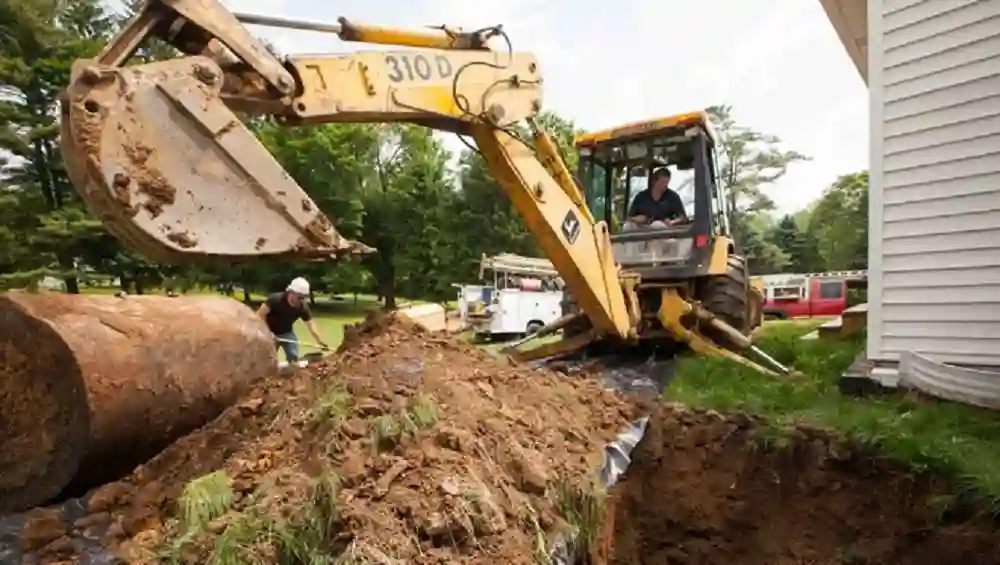Beneath the serene landscapes of countless homes lies a hidden element that, with the passage of time, demands attention – the residential oil tank. As these underground containers age, homeowners often face the necessity of oil tank removal. “Beneath the Earth” offers homeowners essential tips and insights to navigate the process of oil tank removal, ensuring a smooth, safe, and environmentally responsible transition.
1. Early Assessment: Recognizing the Signs of Aging
The journey to successful oil tank removal begins with early assessment. Homeowners should be vigilant for signs of aging, including corrosion, leaks, or structural damage. Regular inspections, ideally conducted by professionals, can help identify issues early on, allowing homeowners to make informed decisions about the need for oil tank removal.
2. Environmental Precautions: Understanding the Impact of Leaks
Environmental considerations are paramount when dealing with oil tank removal. Homeowners should recognize the potential environmental impact of leaks or spills from aging tanks. Conducting soil and groundwater testing before removal provides valuable insights into the extent of contamination, helping homeownersplan for remediation if necessary.
3. Regulatory Compliance: Navigating the Legal Landscape
Understanding and complying with local regulations is crucial for a successful oil tank removal process. Homeowners should research and familiarize themselves with the specific requirements governing removal in their area. Obtaining the necessary permits and adhering to regulatory standards ensures a smooth process and avoids legal complications.
4. Professional Consultation: Enlisting Expert Guidance
Oil tank removal is a specialized task, and professional consultation is invaluable. Homeowners should seek the expertise of certified professionals with experience in oil tank removal. Professionals can assess the condition of the tank, provide guidance on the most suitable removal method, and navigate regulatory requirements, ensuring a comprehensive and compliant process.
5. Choose the Right Removal Method: Tailoring to Your Property
There are various methods for oil tank removal, and selecting the right one is crucial. Factors such as tank condition, location, and environmental impact influence the choice between in-place abandonment and complete extraction. Tailoring the removal method to the unique characteristics of the property ensures efficiency and minimizes potential disruptions.
6. Budgeting Wisely: Anticipate Unforeseen Costs
Budgeting for oil tank removal requires careful consideration of potential costs and contingencies. Unforeseen issues, such as extensive corrosion or environmental remediation, may arise during the removal process. Homeowners should work closely with professionals to develop a comprehensive budget that includes contingencies, ensuring financial preparedness for unexpected challenges.
7. Site Excavation: Exercise Caution and Precision
Excavating the site is a critical phase in oil tank removal. Homeowners should exercise caution and precision during excavation to avoid damage to the tank or surrounding structures. Skilled operators and specialized equipment contribute to successful site excavation, setting the stage for subsequent phases of the removal process.
8. Safe Pumping and Cleaning: Minimize Environmental Impact
Before removal, the tank must be emptied, and thorough cleaning is essential. Properly disposing of any remaining oil and cleaning the tank’s interior minimizes the risk of spills and environmental impact during removal. Following safe pumping and cleaning procedures is crucial for a responsible and environmentally conscious removal process.
-
Lifting and Transport: Ensure Secure Extraction
The safe lifting and transport of the tank are pivotal stages in oil tank removal. Precision and specialized equipment are necessary to extract the tank without causing damage. Skilled operators ensure a secure removal process, minimizing potential risks associated with lifting and transporting the tank.
10. Post-Removal Verification: Confirming a Clean Slate
After the tank has been removed, homeowners should conduct post-removal verification to confirm that the property is free from contamination. Environmental testing and soil analysis provide assurance that the removal process has been successful. This final step ensures a clean slate, allowing homeowners to move forward with confidence.
Conclusion:
Beneath the Earth, the process of oil tank removal demands careful planning, proactive measures, and a commitment to environmental responsibility. Homeowners armed with early assessment, environmental precautions, regulatory compliance, and professional guidance can navigate the complexities of oil tank removal successfully. By choosing the right removal method, budgeting wisely, exercising caution during site excavation, and ensuring post-removal verification, homeowners contribute to a safer, cleaner, and more sustainable living environment.







